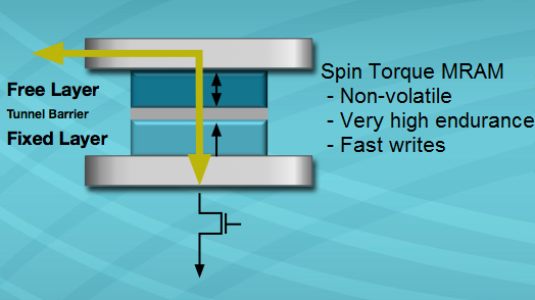Evaluation of Spin-transfer Torque DDR MRAM in Space Environment

MRAM (Magnetic Random Access Memory) technology is very interesting for space use since:
- MRAM could replace both non-volatile memories (EEPROM, NOR & NAND Flash, …) and volatile memories due to its fast writes (SRAM or even DRAM…)
- MRAM technology has a very high endurance (>1e10 cycles when Flash and EEPROM technologies are limited to about 10 000 or 100 000 cycles)
- MRAM technology is known to have a good withstanding in TID, to have a memory cell SEU immune and some MRAM from EVERSPIN technologies are already SEL immune.
All MRAM evaluated here are in Spin-Transfer Torque technology (STT-MRAM) using deep-submicron nodes.
This Everspin’s newest MRAM technology use the spin torque transfer property, which is the manipulation of the spin of electrons with a polarizing current, to establish the desired magnetic state of the free layer to program, or write, the bits in the memory array.
STT-MRAM provides a significant reduction in switching energy compared to Toggle MRAM, and is highly scalable, enabling higher density memory products. This third generation of MRAM technology uses a Perpendicular MTJ (Magnetic-Tunnel Junction).
These products perform like a persistent DRAM but with no refresh required.
